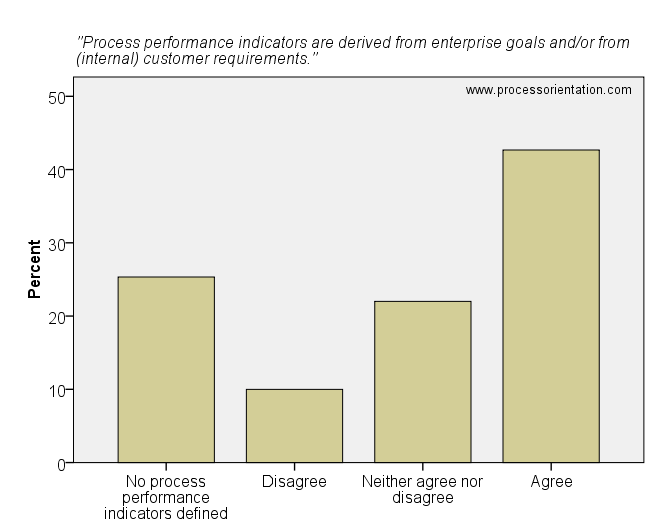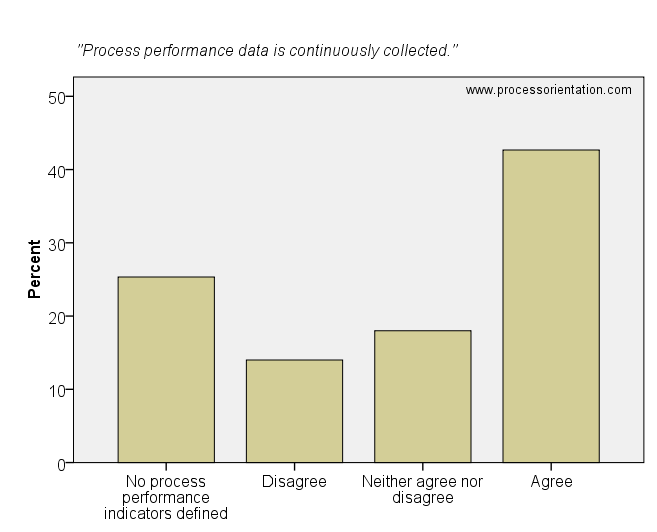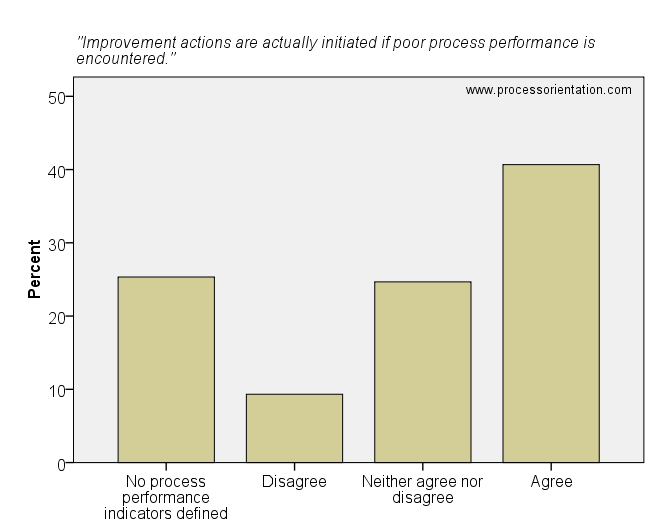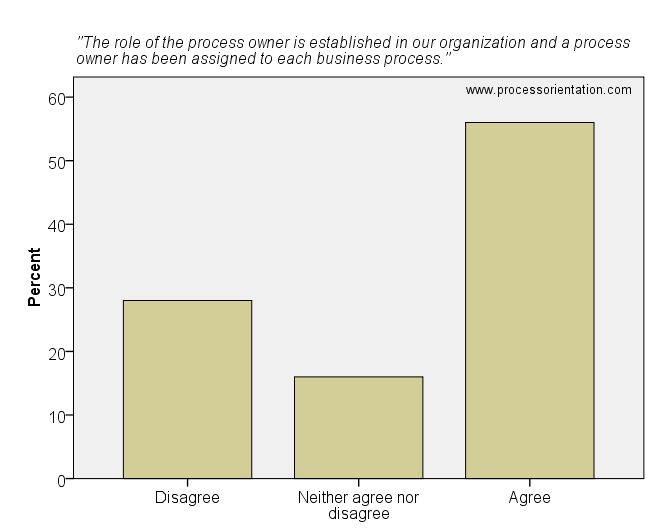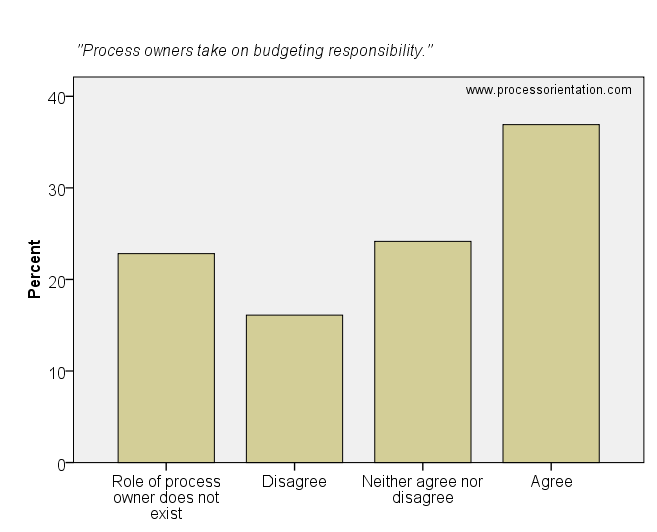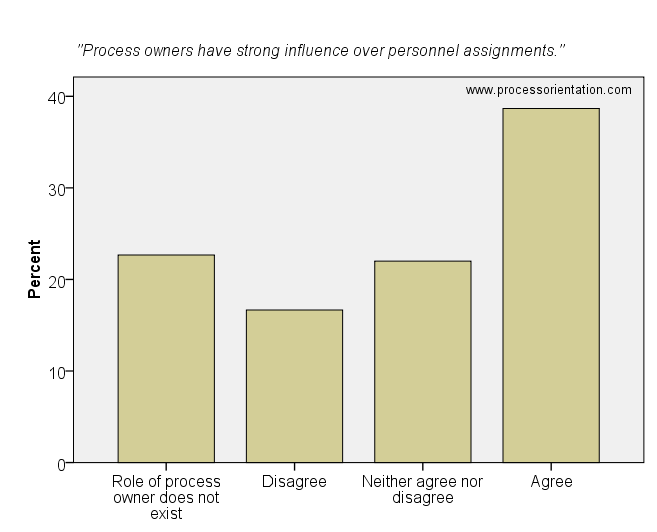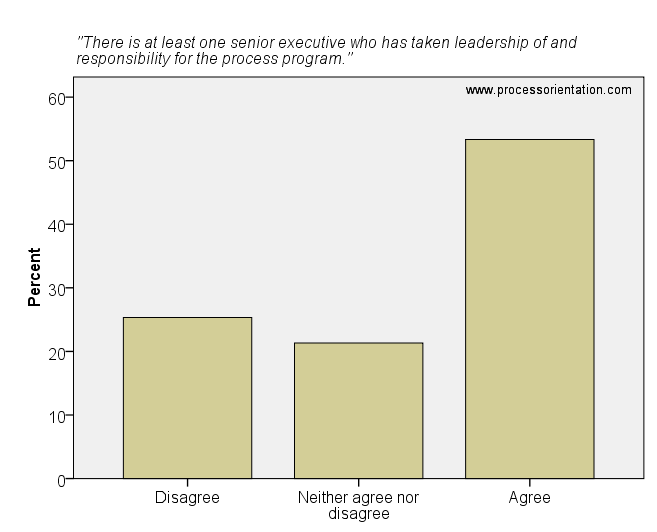Process orientation is also a matter of enterprise culture. The real problems when implementing the process orientation approach are of a cultural nature (Hinterhuber, 1995). The cultural fit is an important issue since people and processes must combine to produce output (Armistead and Machin, 1997). Only a culture based on teamwork, willingness to change, customer orientation, personal accountability, and a cooperative leadership style goes hand in hand with the process approach (Hammer, 2007). This article discusses the results related to corporate culture of the process management survey. Survey details (research design, sample, etc.) can be found here.
A process-oriented organization needs a culture which values teamwork, since business processes cutting across functions must be operated by people in a team (Hammer, 2007). Most of the surveyed firms state that teamwork is a matter of course in their organization. The item “Teamwork (also between different departments) can be taken for granted in the organization” was rated by the firms in the sample as follows:
- 6,67%: Disagree
- 34,67%: Neither agree nor disagree
- 58,67%: Agree

Teamwork (also between different departments) can be taken for granted in the organization.
It is often argued that organizations emphasizing functions and hierarchy are failing to focus on the customer (Hinterhuber, 1995; Schmelzer and Sesselmann, 2006; Gulati, 2007). By contrast, in a process-oriented organization, each business process has a clearly defined customer who receives the result of the process (Schantin, 2004). The item “Our organization’s employees understand that the purpose of their work is to fulfill the needs of the internal/external customers” was rated by the firms in the sample as follows:
- 7,33%: Disagree
- 44,67%: Neither agree nor disagree
- 48,00%: Agree
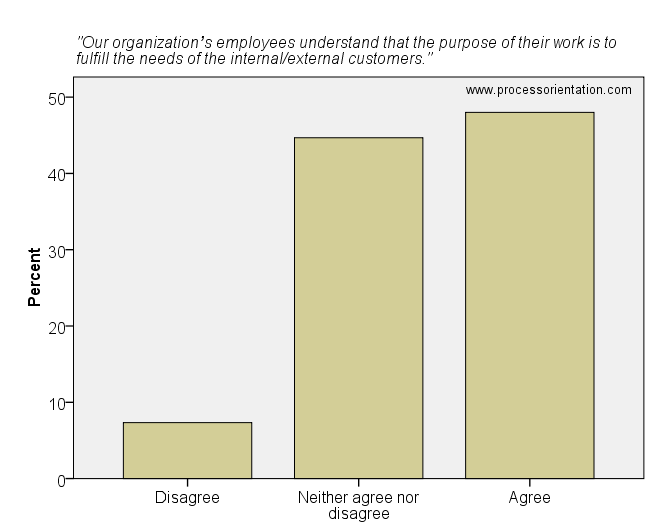
Our organization's employees understand that the purpose of their work is to fulfill the needs of the internal/external customers.
Only organizations whose culture values personal accountability will find it possible to move forward with their degree of process orientation (Hammer, 2007). The item “Our firm’s employees feel accountable for enterprise results” was rated by the firms in the sample as follows:
- 9,33%: Disagree
- 62,00%: Neither agree nor disagree
- 28,67%: Agree

Our firm's employees feel accountable for enterprise results.
The lack of a change-supportive culture is often blamed when process improvement actions fail (Tenner and DeToro, 2000). As business conditions change, process designs need to evolve, and it is the task of process owners to guide that evolution (Hammer and Stanton, 1999). A remarkable part of a company’s change-capability is based on its employees (Nyhuis et al., 2008). The item “Changes in the way work is performed are accepted by the employees in a sluggish manner” (note that the item is reverse-coded) was rated by the firms in the sample as follows:
- 26,67%: Disagree
- 49,33%: Neither agree nor disagree
- 24,00%: Agree
Therefore, in most of the surveyed firms, the employees’ willingness to change is on a moderate level.

Changes in the way work is performed are accepted by the employees in a sluggish manner.
Process orientation is a construct which becomes “real” by communication and interaction, i.e. the construct becomes real if it is communicated by means of a language. By communicating about business processes and their design, process management becomes a reality (Gaitanides, 2007). The item “Employees on all levels of the organization are speaking about business processes, customers, teams, process performance indicators, etc.” was rated by the firms in the sample as follows:
- 36,00%: Disagree
- 42,00%: Neither agree nor disagree
- 22,00%: Agree

Employees on all levels of the organization are speaking about business processes, customers, teams, process performance indicators, etc.
The need to empower staff is often mentioned by literature on team and process-based organizations (Armistead and Rowland, 1996). Traditional management styles have no place in a process enterprise. Managers can’t command and control but they have to negotiate and collaborate (Hammer and Stanton, 1999). The item “The management’s leadership style is based on hierarchical command and control” (note that the item is reverse-coded) was rated by the firms in the sample as follows:
- 44,00%: Disagree
- 34,67%: Neither agree nor disagree
- 21,33%: Agree

The management's leadership style is based on hierarchical command and control.







